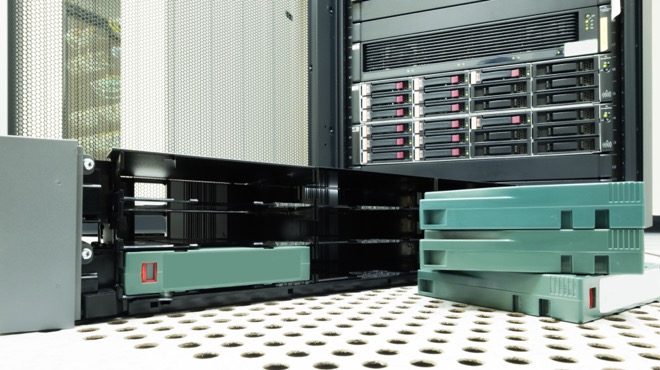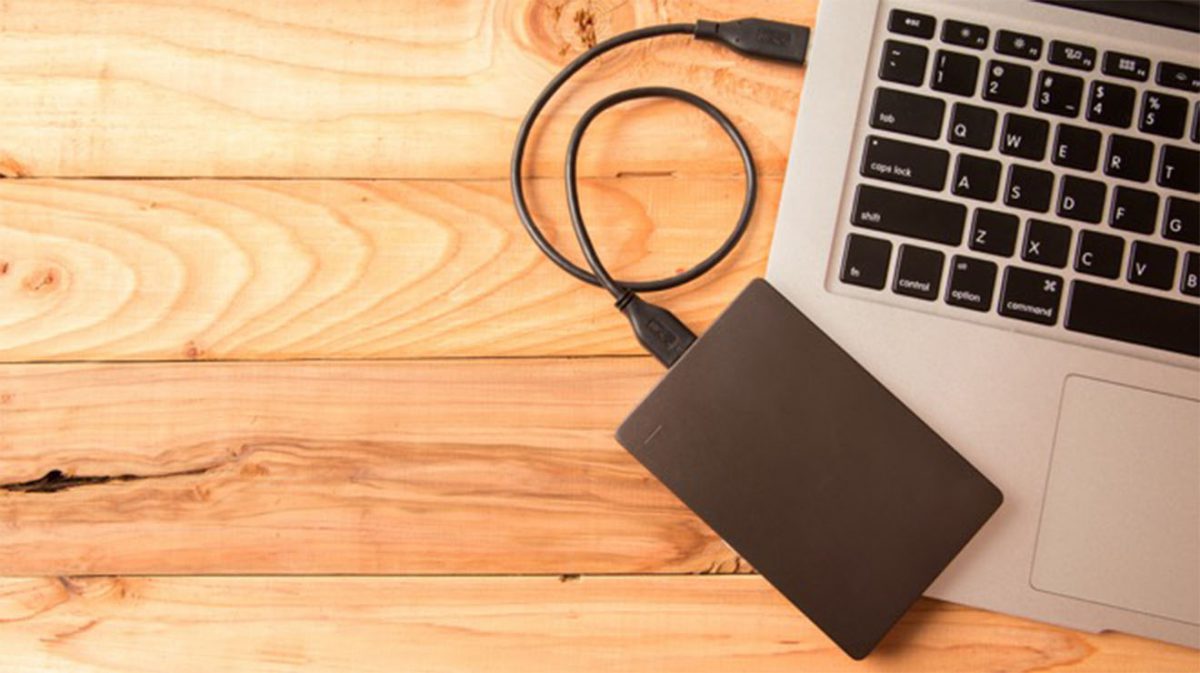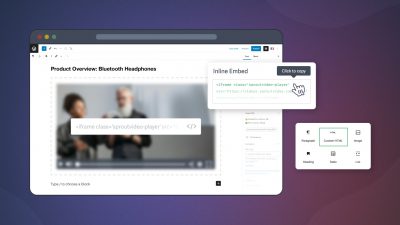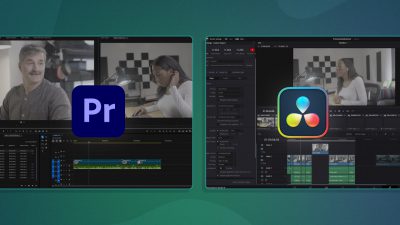(Photo Credit: Laptop by Byjeng on Shutterstock)
With the advent of 4K and 8K production workflows, video editing means working with incredibly large file sizes. This can present all kinds of issues, from running out of space to frustratingly slow performance. So, what is the best way to store all that data while editing your videos?
Before you run out to buy yet another external drive, make sure that’s really your best bet. We interviewed two video experts to break down your options for working with large files while editing video, and go over the pros and cons of each solution.
Storage Problems
Compared to documents or images, video is somewhat unique as a file type when it comes to storage. That’s because each frame of video contains so much information: audio, visuals, timestamps, metadata, and more.
Video editing demands a lot from a storage product. You need to be able to quickly access and edit the files, which requires fast transfer speeds, as well as large capacity. It also has to be very reliable over time.
As you’ll see from our expert interviews, you typically only get speed OR capacity, unless you have a very large budget. As a result, content creators tend to separate their storage into two tiers: working drives that are smaller and faster, and archival drives that are much larger and slower.
Storage Solutions
There are several different video storage solutions that accommodate different needs in terms of volume and workflow. Here’s a quick summary of typical options:
- Portable hard drive – either solid state (SSD) or with a spinning disk, portable hard drives are a go-to for a variety of reasons. Cheap, easy to transport, and increasingly capacious, their main downside is long-term reliability. As a result, redundancy (e.g. backing up) is important, necessitating the use of syncing software like Chronosync.
- RAID – stands for Redundant Array of Independent Disks. Basically, several hard drives are connected into one logical unit, which allows for data redundancy and larger capacity. As a result, you can gain in both performance and reliability.
- Server – essentially the same concept as a RAID, on a much larger scale. Although technically involved to set up, servers can be worthwhile for advanced storage needs, especially if remote accessibility is a priority.
- LTO Tapes – if you cringe when you hear the word “tapes” and immediately picture VCRs… this is not the same technology. LTO stands for Linear Tape Open, and is a high-capacity, single-reel tape storage solution. Designed to be scalable and backwards-compatible, you can increase your storage as your needs grow.

(Photo Credit: LTO Tapes By Full_chok on Shuttertock)
In practice, we find even seasoned professionals tend to make do with whatever solution is at the ready. The fast pace of video work necessitates that you make quick decisions and are constantly available, so an immediate solution is often the go-to.
Instead of just buying yet another hard drive, see what our experts had to say about the storage setup they use for their video work.
Expert Advice
We asked two video professionals to weigh in on their preferred storage products, and the pros and cons of each. Combined, they work with well over a petabyte (1,024 TB) of video!
Lewis Smithington, 30 Ninjas
First up is Lewis Smithingham, president and partner of 30 Ninjas. With his team, Lewis produces virtual reality and interactive digital media, as well as various YouTube shows, livestreams, and other content.
Storage Products In Use
To handle all of the resulting data, they use a variety of storage products, showing that the best solution might actually be a mix. Currently, they have:
- 200 TB spread across multiple Glyph and OWC RAIDs
- 1 PB of LTO tapes
- 10 GB on a 60 TB QNAP
- A speedy custom render server (20 TB)
What do you use for video editing? What do you use for backing up projects?
We tend to edit on the QNAP and then render to our custom solution, or to a RAID. This enables us to access projects quickly and easily.
We back up to the LTO tapes because they are inexpensive for the volume we are dealing with, and highly durable.
What are the pros and cons?
LTO tapes are inexpensive and hardy, so they are a good option for projects you need to store over a long period of time. However, LTO also requires more troubleshooting than I would like it to.
The RAIDs are also an imperfect solution because they are slower than I would like them to be and also can only connect to one computer at a time.
Do you think there’s a better solution out there?
Basically, size and speed are my only needs, which kinda work in tandem. I think things are getting a lot better. But my average project size is around 50 TB when it’s finished, so it’s pretty painful. We wrapped a project last year that was 125 TB, before we backed it up.
Any additional comments you’d like to make about storage?
What I’d love is a better way to catalog stuff. Dealing with all this data in different places can be challenging. We are very organized in how we handle our work because we have to be, but I’m sure there could be a less involved and less time-consuming solution.
Michael Rubenstein, Freelance Photographer and Director
Next, we asked Michael Rubenstein how he solves for his storage needs as a busy freelancer. Michael works on a variety of commercial and advertising still and motion projects.
Storage Products In Use
Like many freelancers, Michael needs a light, portable setup for capturing footage on the go. Then, he needs a speedy drive for video editing, and dependable long-term storage for finished projects.
He currently uses:
- Synology 80 TB RAID for archives
- LaCie 6Big 30 TB working drive
- Several 2 TB LaCie Rugged Drives, both spinners and SSD, for on location
What do you use for video editing? What do you use for backing up projects?
I use the LaCie 6Big drive for video editing, and the Synology RAID for archiving my work.
What are the pros and cons?
The Synology could be easier to use. It’s not plug-and-play. I also could use a secondary backup for the Synology, ideally a cloud-based option, or another box in a separate location. Unfortunately, it’s very expensive to have another box.
Do you think there’s a better solution out there?
I’m looking forward to the day that cheap and fast cloud storage becomes a viable option for video editing.
What Should You Use?
After discussing storage options with our experts, we found there are three key factors in choosing the right storage solution for your video editing work:
- Budget – what can you afford to pay?
- Work Requirements – how will you be using the files?
- Capacity – how much storage do you need?
Your budget will determine the range of products you can consider, while your work requirements will determine the features you need. Then, the volume of data you will be working with will help you narrow down your product choice even further.
If your budget is under $500…
Portable external hard drives are likely the way to go. The cost per GB has come down, and reliability has improved over time.
Be sure to label your drives clearly so you know exactly what they contain. Spring for solid state drives if you are primarily using them for editing, as the enhanced speed will be worthwhile.
Backing up your drives manually can be time-consuming and subject to human error. Using syncing software to automate this process is well-worth the expense.
If your budget is $500 – $2,000
Entry-level RAID solutions are a possibility at this price point, and come with added durability. They are worth exploring for larger capacity, and longer term storage needs instead of buying multiple external hard drives.
Like our experts, you may find it’s worth getting a drive specifically for editing, and another solution for storage.
If your budget is $2,000+
A bigger budget means many more options. The good news is that you can afford more specialized storage products to fit your exact needs. The bad news is that you’re spoiled for choice.
Avoid analysis paralysis by focusing on your specific needs, and narrowing down choices accordingly.
If portability is a priority, you’re still looking at external hard drives. If capacity is a bigger factor, a RAID setup would be a worthwhile investment. If durability over time is paramount, LTO tapes, the cloud, or a custom server would be best.
One Storage Size Does Not Fit All
Ultimately, there is no single solution that will work for every video editor out there. Different workflows have different requirements, so specific needs vary quite a bit.
Our breakdown of the options available, and the wisdom from our experts, should help you determine which solution might work best for you.
If you have a storage solution for video editing we didn’t cover, and find it works really well, we’d love to hear about it! Share it with us in the comments below.








